“Cities were built by entrepreneurs, industries were built by entrepreneurs, the economy was built by entrepreneurs”, author David Kidder said in one of his best-selling books – The Startup Playbook – While we can easily agree with Kidder, we have to bear in mind the uniqueness of the start-up economy in the AM industry. It’s an environment that can achieve its ultimate goal – the industrialization of AM -, only if it is driven by the entrepreneur’s ability to seize the right opportunity, but above all, by an active knowledge transfer, a progressive governmental thinking no matter where the start-up is based in and solid collaborations between VC firms and parent companies. It should be a healthy synergy. That’s exactly what AMTC ambitioned to portray during the first day of this 2022 edition.
The fifth annual Advanced Manufacturing Technology Conference (AMTC) gave a new dimension to various discussions related to the latest Additive Manufacturing trends, innovations, and challenges. The campus of Technical University of Munich (TUM) was the scenario where international cooperation continued to brew as executives, researchers, and experts foresaw the establishment and consolidation of a global network. There is no doubt that Oerlikon and TUM as host partners ensured the creation of a platform that fosters the much-needed synergy that must exist between fundamental industry stakeholders, the ultimate goal being to enable AM to earn credibility as a viable manufacturing technology. Simply put, the first day of the vibrant gathering had two fundamental axes: start-ups and internationalization.
After the introductory overview of Dr. Melinda Crane and Sven Krause, the program followed with a keynote speech from Arno Held from AM Ventures on the current international market of 3D printing start-ups. Held emphasized the uncertainties caused by the turbulent times marked by the pandemic and the geopolitical crisis brought by the war in Ukraine. These became push factors for the industry to come up with solutions to challenges raised within supply chains of different sectors of activity; solutions and challenges that he discussed under the lens of financing.
AM Ventures have developed a portfolio that encompasses the most promising fields of activity in the AM space from advanced heat exchangers, high-performance ceramics AM, composites to silicon 3D printing.
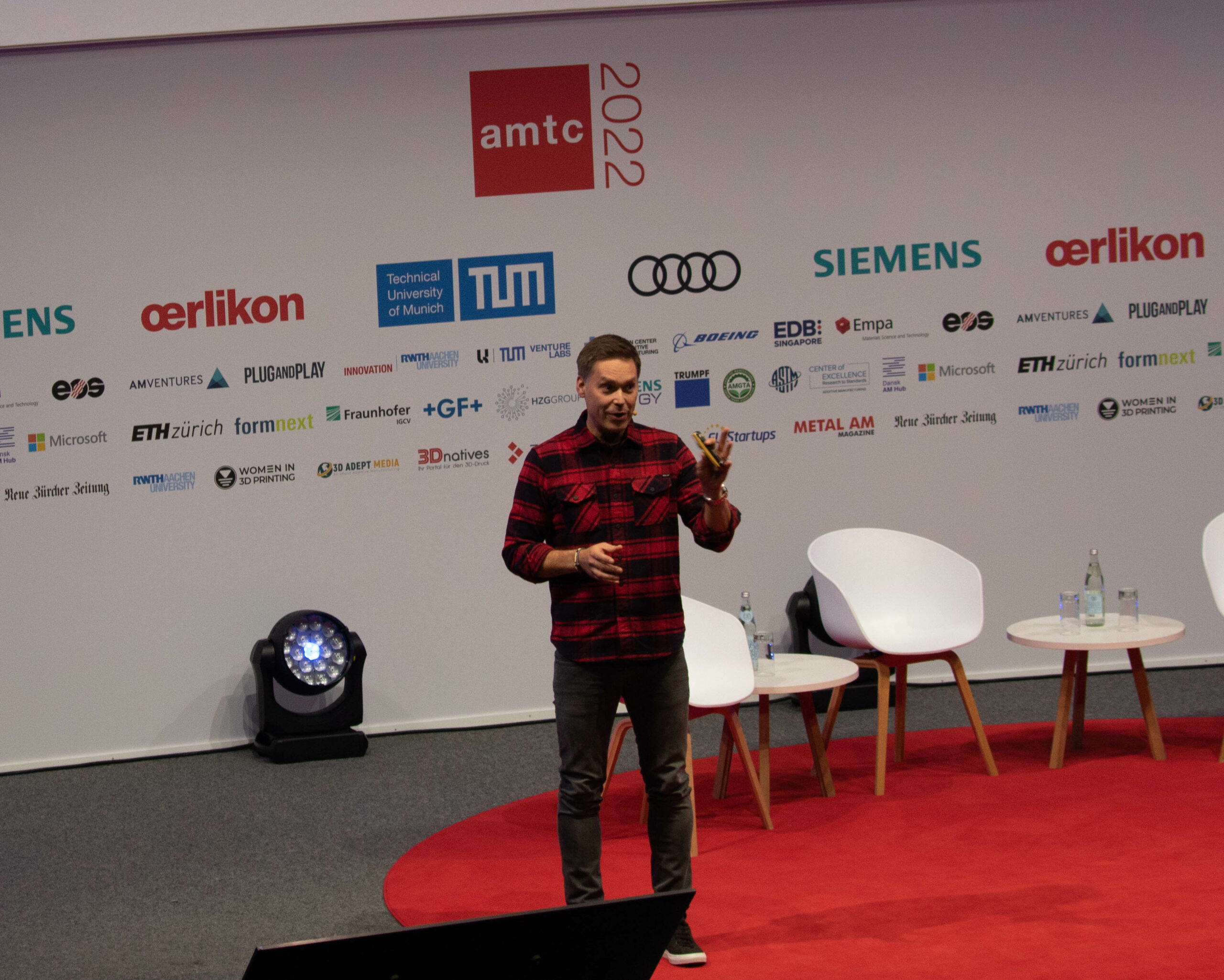
Arno Held from AM Ventures addressed the context of companies that focus on identifying opportunities on AM applications developments.
While resource optimization, design innovation, adoption of digitalization are some of the key aspects the entrepreneur should pay attention to on the current economic environment, the challenge for VC firms remains to identify the start-up that develops a product with a real potential for industrial scale production. Whether we talk about small, middle or big companies, this challenge remains the same.
Held’s presentation sounded like an echo as he highlighted vital points he once discussed with 3D ADEPT Media: the importance of mitigating the chaos by understanding the market dynamics, by understanding the digital value chain and applications that can foster the adoption of AM, and most importantly, the need to prioritise collaborations (with VC firms) over acquisitions.
He also discussed the importance of international synergy, Asia being the region with the highest volume of young developments followed by Europe, Silicon Valley, China and India. The latest two regions are the current hotspots where investors interested in the 3D printing industry should look upon new investments.
Some of the interesting start-ups in the aforementioned regions outside Europe:
“Connecting Opportunities to drive the AM Ecosystem”
One of the ways the Advanced Manufacturing ecosystem is expanding lies in the level of discussions and cooperation involved. In a roundtable discussion, representatives of three companies discussed how start-ups can become more resilient facing the challenging times we currently live in.
Dr. Oliver Trinchera from Kinexon shed light on the importance of organizational culture. “Strong company culture is fundamental for so many other aspects that follow, for example the way we work and communicate as well as the way we value performance”, he said.
James DeMuth from Seura technologies laid emphasis on the fact that the metal 3D printing process along with decarbonization, local manufacturing and scale application can be achieved through collaborative efforts.
Dr. Miriam Haerst from Kumovis discussed the opportunities that may arouse from a crisis. Her statements also exemplified how far a start-up can develop when it is backed by a solid parent company.
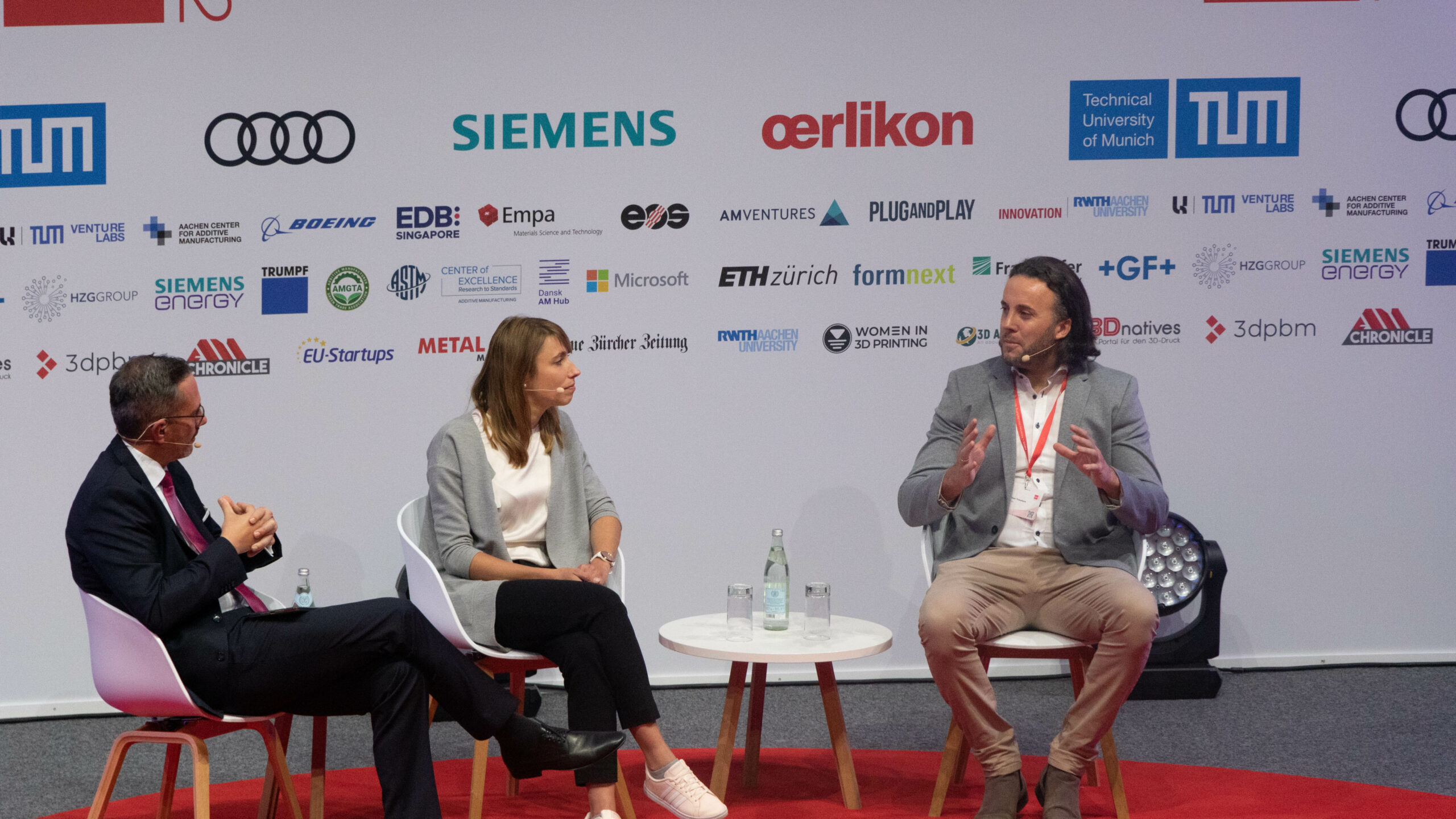
Crisis is always a chance and an accelerator to visualize something different
The example of Kumovis as a healthy synergy between start-ups and bigger companies
Kumovis develops medical 3D Printers that can manufacture medical products from high-performance plastics. The benefits for R&D institutes and hospitals vary from tailoring functional and customized medical products to developing drugs and medical devices based on patient requirements.
Innovative aspects must be attractive enough to draw the attention of private investors as raising capital remains one of the top challenges in this industry. The case of Kumovis reveals key milestones that have enabled the company to position itself as one to watch on a crucial and vital industry like healthcare. Since the launch of its Kumovis R1 in 2019, the company secured a funding round led by Solvay Ventures and Renolit – Solvay being another giant in the healthcare and AM industry through its multifaceted business -, opened a subsidiary in the US and since February operates as part of 3D Systems’ portfolio of companies.
This serves as example of a healthy synergy between start-ups and bigger companies, which ultimately boosts the application and adoption of AM technologies across various sectors. Kumovis’ journey – in particular collaborations with both VC firms and industry companies – makes it possible to foresee solutions to sectors that are struggling to find their place in the AM ecosystem.
Securing a positive and active knowledge transfer
The program followed with the inspiring talk of Prof. Helmut Schönenberger from UnternehmerTUM. Prof. Schöenenberger pointed out the important feedback provided by AM conferences and the AM ecosystem, and the role of Bavaria to create value in this industry.
The soon-to-be incorporated “Bavarian AM Cluster” (BAMC) will facilitate a state-supported, close consortium cooperation between companies and the university. Together, they will overcome technical and economic hurdles on the way to the industrialization of additive manufacturing. One of these hurdles is the lack of digital infrastructure when unlocking the full potential of AM. As you will read below, the start-ups present at AMTC currently address some of these challenges.
Another hurdle consists in scaling capabilities and processes. Each manufacturing process has their own challenges therefore knowledge transfer should be backed by an effective pipeline and success stories. The role of Bavaria to create value and stimulate the industry is key in this journey. Given the financial projections of TUM which grew by 3,5 billion in 2021, it is clear that AM development should be in line with academy initiatives and seed programs on the one hand, and supported by progressive governmental thinking on the other hand.
Challenges and trends in the 3D start-up scene
This first day ended with the start-up challenge powered by Formnext and the presentation of AM developments in America, Europe and Asia.
In general, the presentations from speakers from all over the world revealed common problems: disrupted industrial supply chains, especially within global logistics schemes, raw material sourcing, the integration of AM into other industrial processes, or the impact of the current economic context on technology investments.
While each of these challenges requires specific attention – and even a dedicated article – it is important to bear in mind that each region must learn from the lessons of others, it must adapt these lessons to its own cultural and economic context.
At the end of the day, six startups gave brief presentations on innovative ideas, including solutions for AM applications.
The start-up challenge
Speakers of the Formnext start-up challenge shed light on some of the opportunities that are worth exploring on the market. Luisa Elena Mondora for instance, co-founder and CEO of F3nice, introduced her company that develops high quality, sustainable metal AM feedstock, with a process that saves over 90% emissions compared to the standard process. If you are a regular reader of 3D ADEPT Media, you may have read Mondora’s words in this Q&A series and you will learn more about the company’s recent milestones in the soon to released September/October edition of 3D ADEPT Mag.
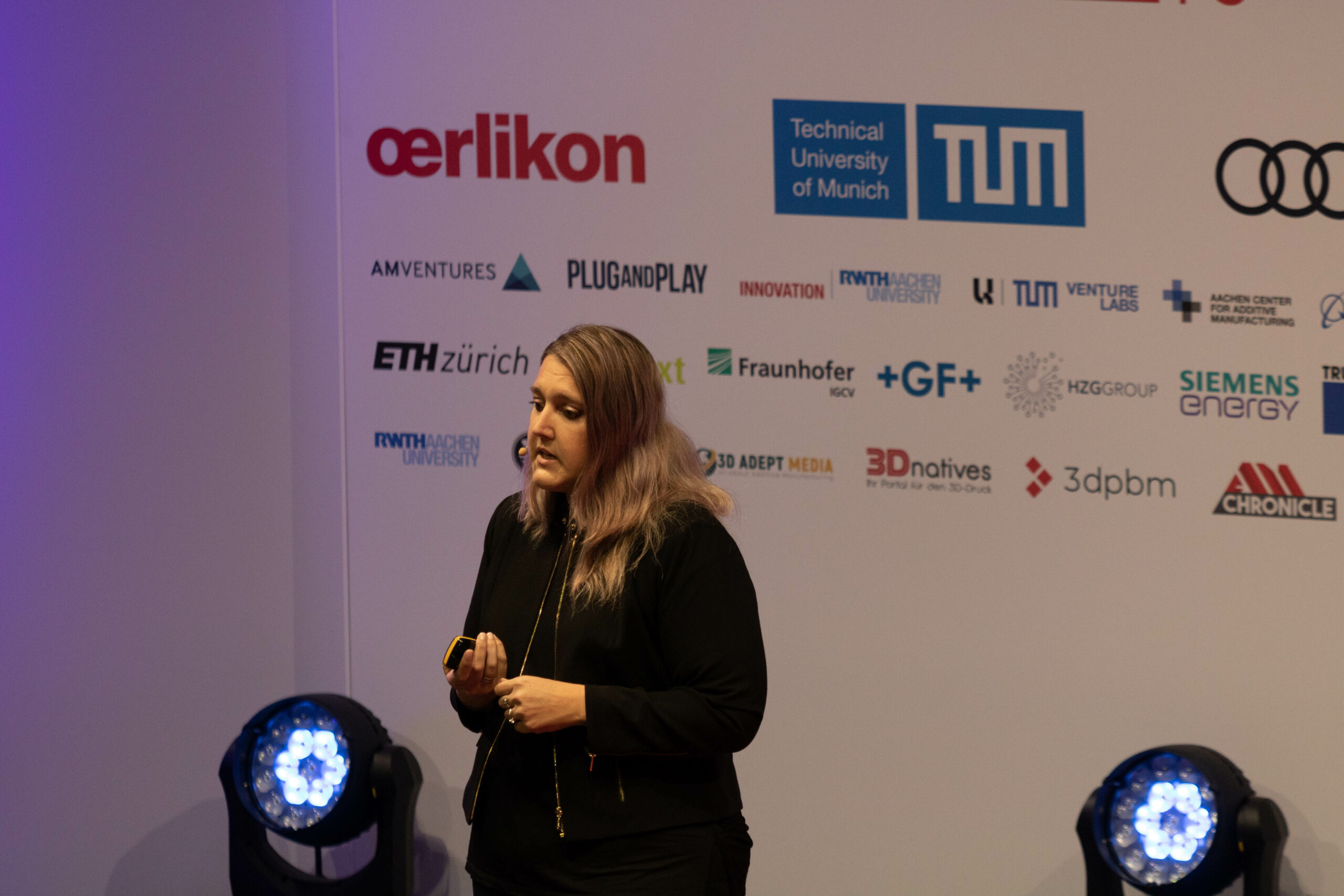
On another note, Vincent Gerretz, cofounder and Managing Director of deep-tech startup Gemineers highlights the convergence of data and measurement through real-life application examples. According to Gerretz, amid the wide range of challenges they face to speed up their digital transformation, start-ups lack knowledge on how to work on/with data. For this entrepreneur, there is no one-size fits all: getting the right data and leveraging them at the right pace has to be understood on a case by case basis, in order to achieve the desired ROI.

Another entrepreneur who surfs on this wave is Akanksha Jagwani, cofounder of SixSense. This start-up develops an AI-powered platform that addresses the issue of high cost of visual quality inspection in manufacturing. To do so, their software platform scans millions of images at high speed and identify defects at scale. While they operate in several countries, Jagwani recognizes that time zone differences can be quite challenging for a start-up trying to have a global footprint. However, from a business standpoint, she believes that focusing on the right technology application can help them close the gap between the idea and the end product. “It’s about mapping the problem with the solution”, she said.

Complex problems need such events for people to meet and think together
Jeff Lints CEO and founder of Fortius Metals (a spinout of Elementum 3D that develops wire-based materials ) and Kazuhiko Nishioka co-founder and CEO of Sun Metalon (metal 3D printing service provider), discussed the importance of using the right materials to achieve quality and efficiency during the manufacturing process and the need to reduce costs. While they are standalone companies that operate on different markets, Fortius Metals and Sun Metalon address challenges that are important for the current manufacturing environment: the need for stronger and lighter parts (which can be achieved through welding wire specific materials with improved grain structure developed by Fortius) and the need to foster on-site production of metal parts which is the core business of Sun Metalon.
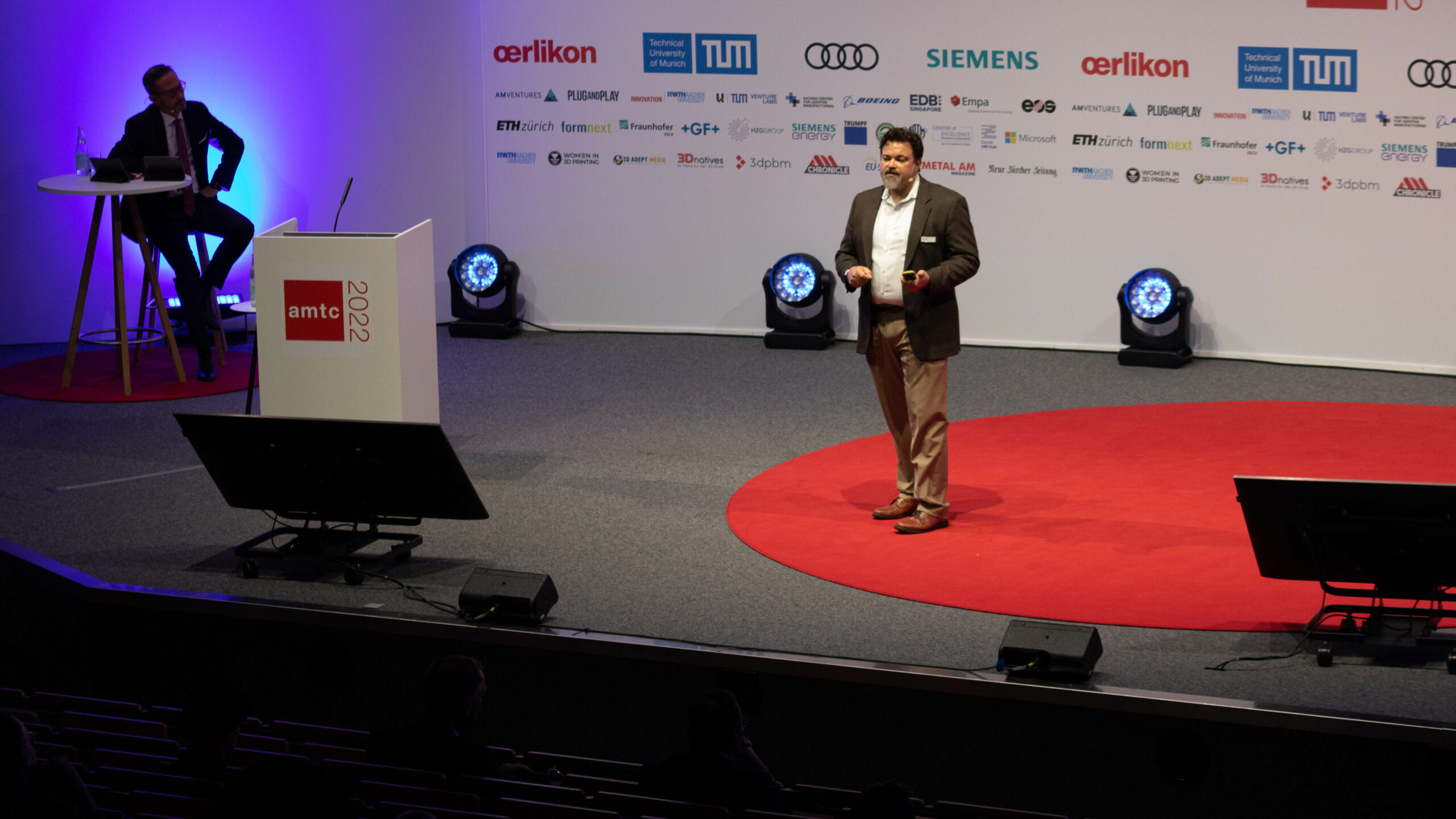
Jeff Lints from Fortius Metals won the pitch challenge after discussing a solution for metal residues by controlling grain structure
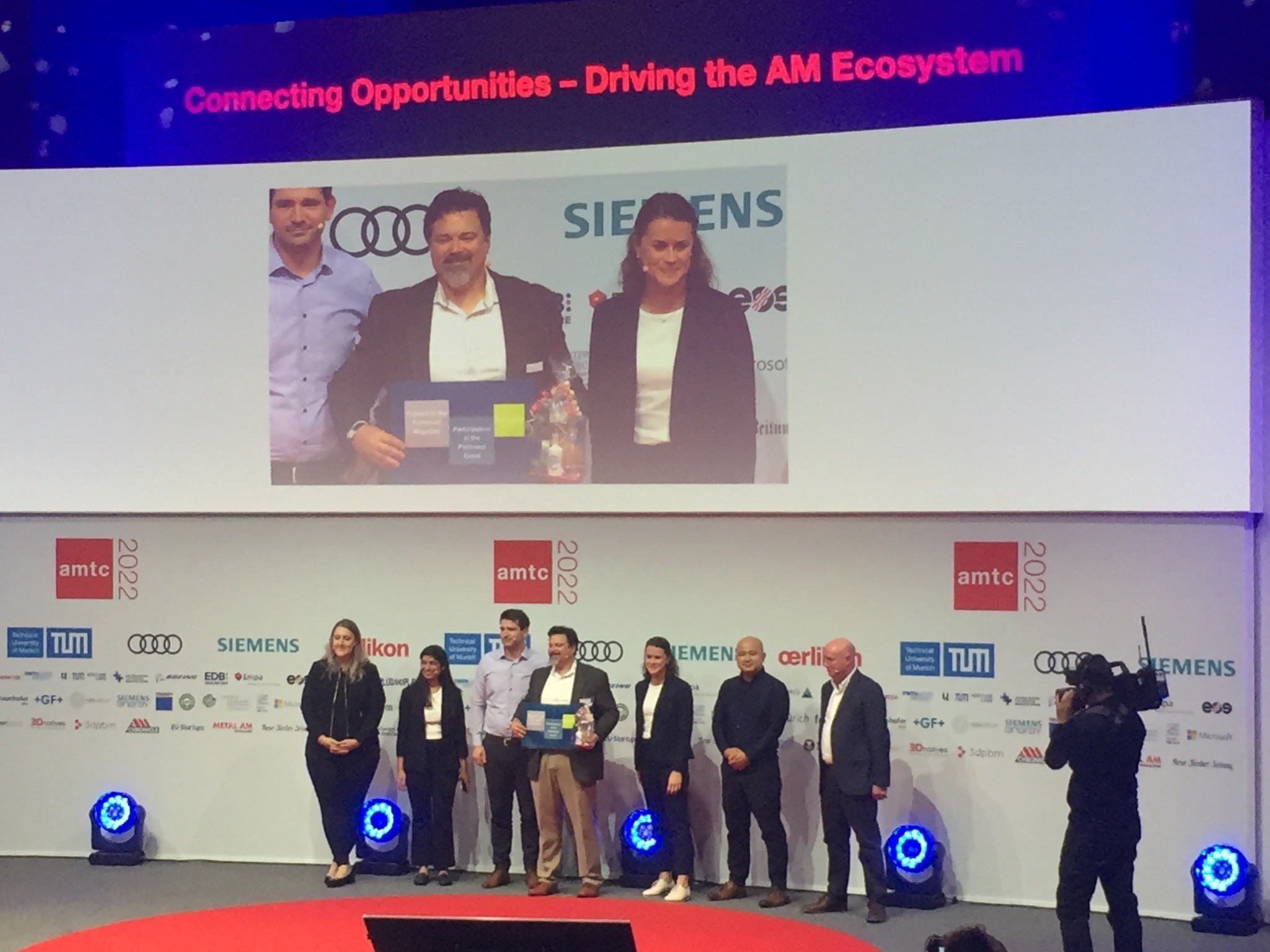
Lastly, the start-up challenge settled the mood for the beginning of the second day of AMTC. After a question of moderator Sven Kraus on the qualification of commercialization of materials in demanding industries, Lints unconsciously gave a hint about one of the key topics of day 2 of the conference and explained that materials require a long time to be qualified. While the manufacturing issue can be rapidly identified, it might take up to 5 years to qualify a material for a given technology, let alone that material for a given AM application. As Rüdiger Theobald from BASF once told 3D ADEPT Media, “one year in AM is 10 years in traditional chemistry.”
Images and videos: © 3D ADEPT Media. Remember, you can post free of charge job opportunities in the AM Industry on 3D ADEPT Media or look for a job via our job board. Make sure to follow us on our social networks and subscribe to our weekly newsletter : Facebook, Twitter, LinkedIn & Instagram ! If you want to be featured in the next issue of our digital magazine or if you hear a story that needs to be heard, make sure to send it to contact@3dadept.com



